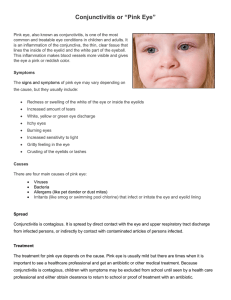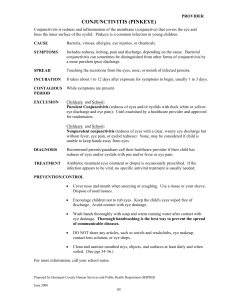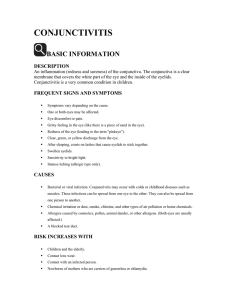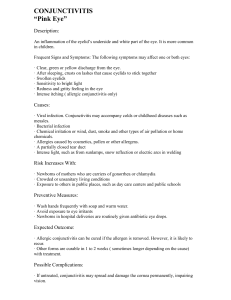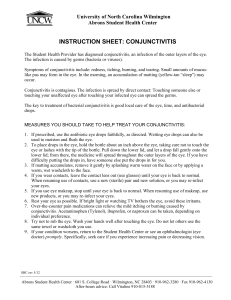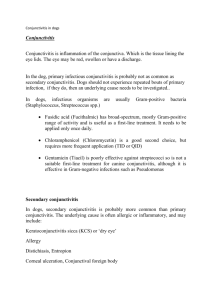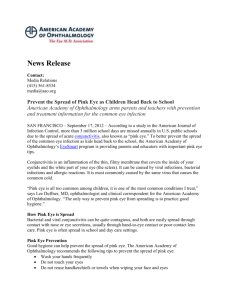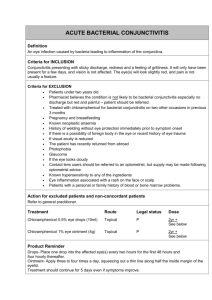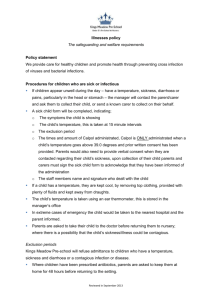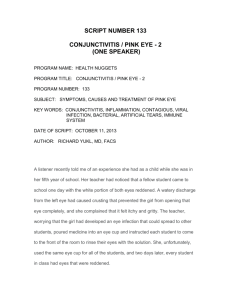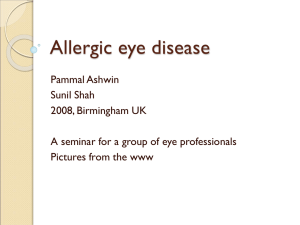Pink Eye (Conjunctivitis)
advertisement
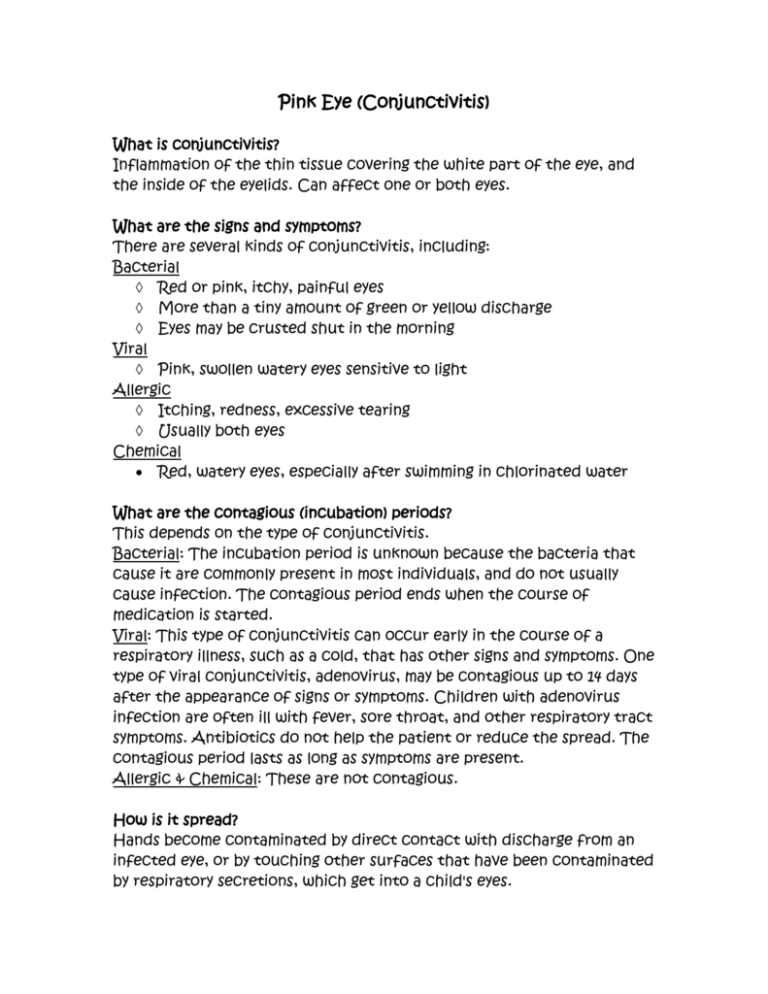
Pink Eye (Conjunctivitis) What is conjunctivitis? Inflammation of the thin tissue covering the white part of the eye, and the inside of the eyelids. Can affect one or both eyes. What are the signs and symptoms? There are several kinds of conjunctivitis, including: Bacterial Red or pink, itchy, painful eyes More than a tiny amount of green or yellow discharge Eyes may be crusted shut in the morning Viral Pink, swollen watery eyes sensitive to light Allergic Itching, redness, excessive tearing Usually both eyes Chemical Red, watery eyes, especially after swimming in chlorinated water What are the contagious (incubation) periods? This depends on the type of conjunctivitis. Bacterial: The incubation period is unknown because the bacteria that cause it are commonly present in most individuals, and do not usually cause infection. The contagious period ends when the course of medication is started. Viral: This type of conjunctivitis can occur early in the course of a respiratory illness, such as a cold, that has other signs and symptoms. One type of viral conjunctivitis, adenovirus, may be contagious up to 14 days after the appearance of signs or symptoms. Children with adenovirus infection are often ill with fever, sore throat, and other respiratory tract symptoms. Antibiotics do not help the patient or reduce the spread. The contagious period lasts as long as symptoms are present. Allergic & Chemical: These are not contagious. How is it spread? Hands become contaminated by direct contact with discharge from an infected eye, or by touching other surfaces that have been contaminated by respiratory secretions, which get into a child's eyes. How do you control it? Consult a health care provider for diagnosis and possible treatment. The role of antibiotics in treatment and preventing spread is unclear. Most children with pinkeye get better after 5-6 days without antibiotics. Careful hand hygiene (handwashing!) before and after touching eyes, nose and mouth. Careful sanitation of objects that are commonly touched by hands or faces, such as table, doorknobs, telephones, toys. Comments It is helpful to think of pinkeye like the common cold. Both conditions may be passed on to others, and resolve without treatments. We do not exclude children from school for the common cold. Pinkeye generally results in less symptoms of illness than the common cold. The best method for preventing spread is good handwashing. Source: Managing Infectious Diseases in Child Care and Schools, American Academy of Pediatrics, 2nd Edition.
